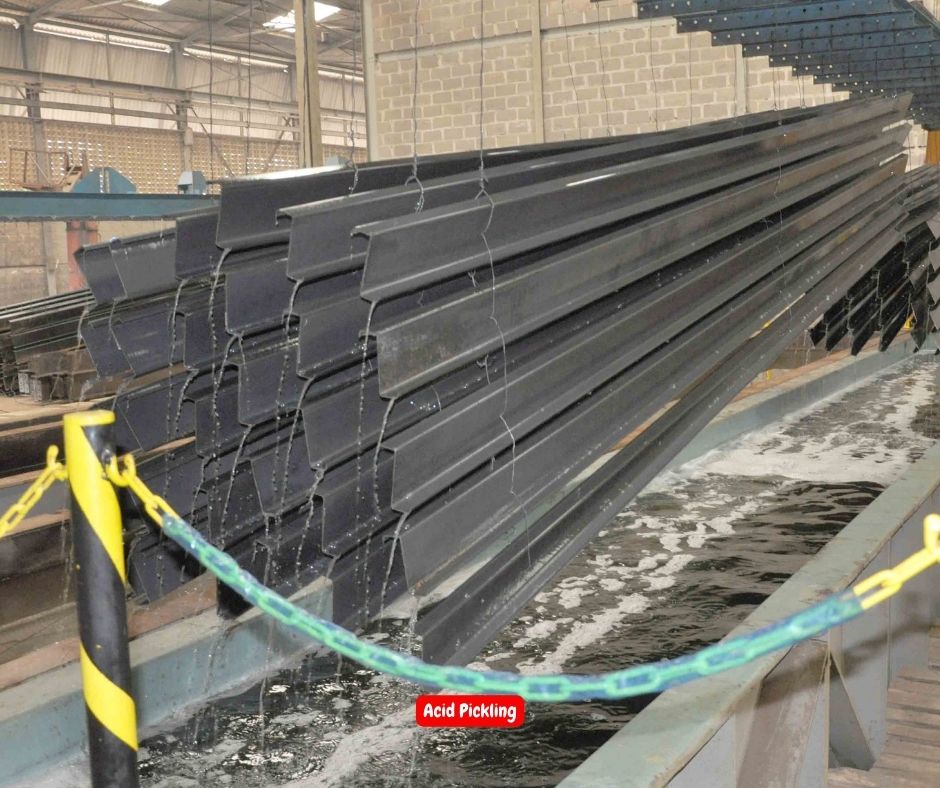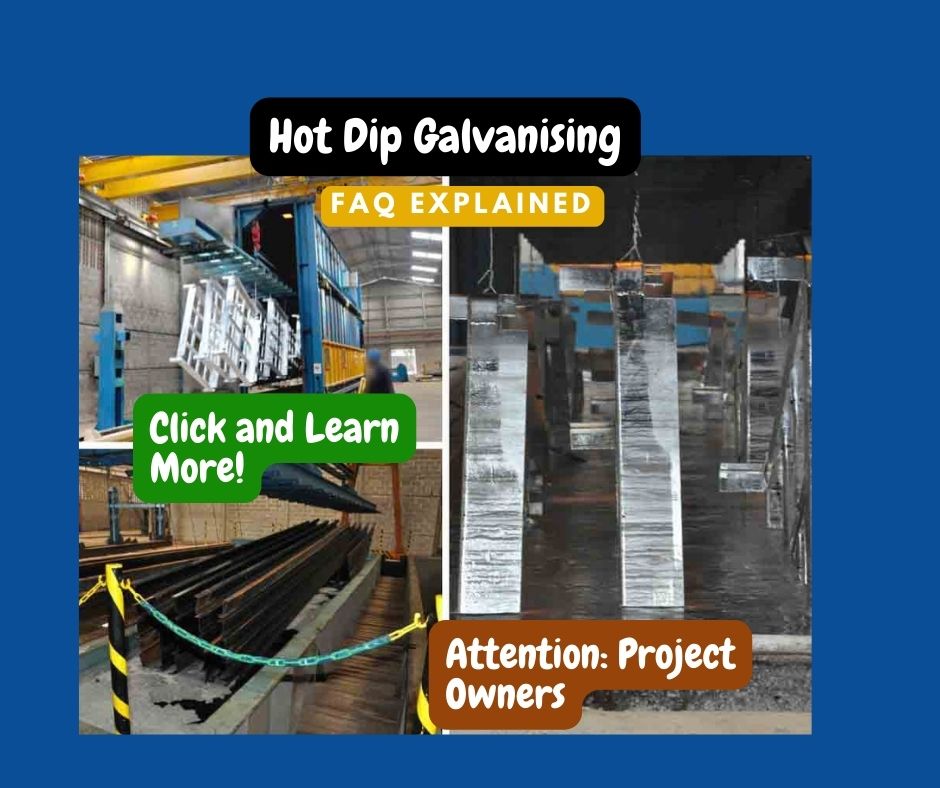Introduction: Surface Preparation of Steel Structures
Hot-dip galvanising is a widely used method for protecting fabricated steel materials from corrosion, ensuring longevity, and maintaining structural integrity. However, the success of the galvanising process heavily relies on meticulous surface preparation prior to immersion in the molten zinc bath. As an experienced consultant in the field, I’ll guide you through the crucial steps and considerations for achieving optimal results in fabricated steel surface preparation for hot-dip galvanising.

- What is the importance of surface preparation? Before delving into the specifics, it’s important to understand why surface preparation is essential. A clean and properly prepared surface ensures effective bonding between the steel substrate and the zinc coating. It removes impurities that can hinder adhesion, allows for uniform coating thickness, and prevents the formation of voids or weak spots in the galvanized layer.
- What are the initial steps of surface preparation? The process begins with the removal of any visible contaminants such as dirt, grease, oil, paint, and rust. This is often achieved through abrasive methods like grinding, sandblasting, or using chemical cleaning agents. A thorough cleaning is crucial to promote proper zinc bonding.
- How does surface profiling contribute to preparation? Surface profiling involves creating a textured surface on the steel that enhances zinc adhesion. It’s achieved through methods like abrasive blasting, which not only removes contaminants but also roughens the surface to create microscopic anchor points for the zinc. The level of profiling required depends on the steel’s thickness and the galvanising specification.
- What is the role of acid pickling? Acid pickling, often involving hydrochloric or sulfuric acid, is used to remove mill scale and oxides that can remain even after abrasive cleaning. This step exposes a clean metal surface, allowing for optimal zinc bonding. However, proper rinsing after pickling is crucial to prevent acid residue from affecting the galvanising process.
- How does fluxing fit into the process? Fluxing involves immersing the prepared steel in a zinc ammonium chloride solution. This process removes any remaining oxides, prevents re-oxidation, and creates a chemically clean surface ready for galvanising. It also helps with the initial alloying of zinc and iron, further enhancing coating adhesion.
- What precautions should be taken before galvanising? Before sending the steel for galvanising, it’s important to inspect the surface for any irregularities or issues. Proper drainage holes should be provided to ensure complete coverage and venting of trapped air during the immersion in the zinc bath.
- Are there any post-preparation considerations? After galvanising, inspect the coated steel for any irregularities in the zinc layer. This includes looking for drips, excess zinc, or rough surfaces. Such issues can be addressed through appropriate post-galvanising treatments like grinding, re-galvanising, or metallizing.
Conclusion:
Effective surface preparation is the cornerstone of successful hot-dip galvanising for fabricated steel materials. By meticulously removing contaminants, creating a textured profile, employing acid pickling and fluxing, and paying attention to post-galvanising inspections, you can ensure the longevity and performance of your galvanized steel structures. This process, backed by years of industry experience, guarantees that the protective zinc coating will adhere uniformly and withstand the test of time, offering optimal corrosion resistance and structural durability.



